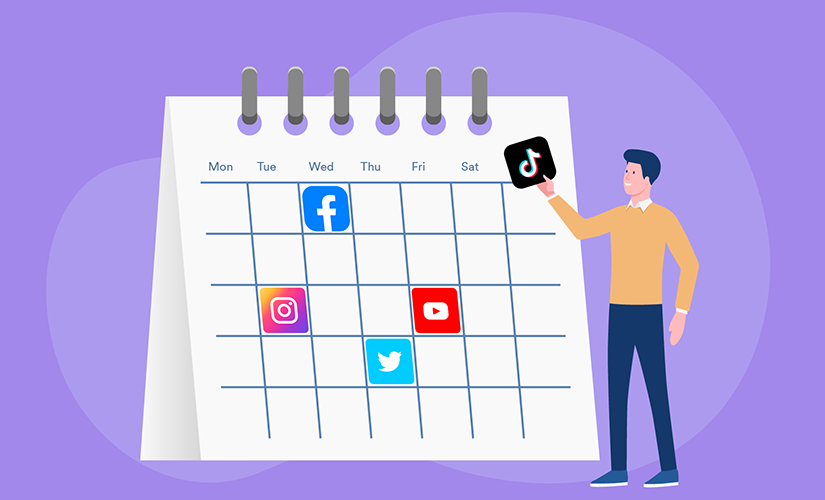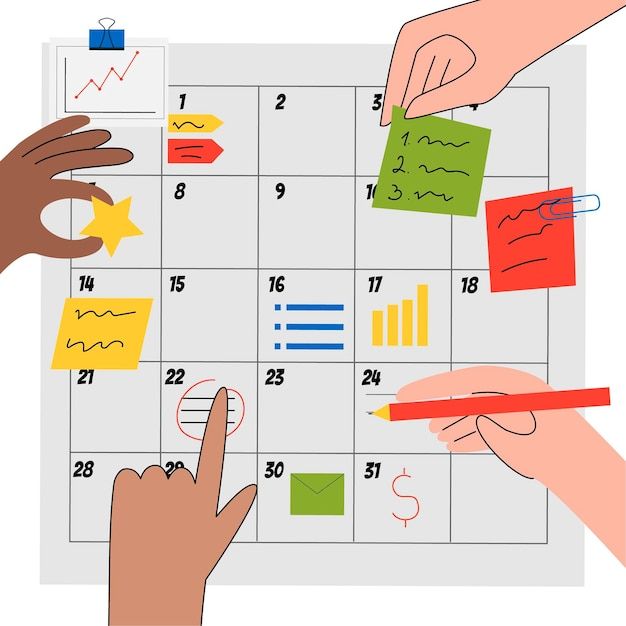A content calendar can be an essential tool for anyone who wants to manage an organized and effective strategy for content. It doesn’t matter if you’re a solo blogger, a small-scale business, or an enterprise; a well-organized content calendar can significantly simplify the process of creating content to ensure consistency and relevancy. Let’s take a look at the steps required to create an effective calendar of content to keep your content strategy on the right track.
The content calendar, also referred to as an editorial calendar, is a plan document that helps you plan and organize content for various platforms. It defines what content you’ll post on which platforms and when. This tool is crucial for maintaining a consistent publishing schedule and making sure that your content is aligned with your overall strategy for marketing. Consider it your content plan, which will guide you on how to write your content and the best time to share it to increase the reach and engagement.

Why should you bother with an agenda for content? Here are some compelling reasons to consider:
Organization This helps you keep your ideas for content and schedules in one spot. With a calendar of content, you can view your complete content strategy at a glance. This will help you make plans ahead and prevent last-minute scrambles to find content.
Consistency: Ensures regular updates, which are essential for engagement with your audience. Consistency creates trust with your target audience and helps establish a trustworthy presence in your industry.
Efficiency• Helps prepare ahead, which reduces late-night scrambles for content. Knowing what must be completed and when you will be able to control your time and resources more efficiently.
Strategic Planning: allows you to align your content to business goals and marketing strategies. Content calendars help you align your content strategy with your overall marketing strategy and ensure that your content is in line with the goals of your business.
Performance Tracking This makes it easier to know what things work and what don’t, which allows you to tweak your approach to meet your needs. If you keep track of your content’s performance, you can spot patterns and then optimize your strategy.

Content calendars are available in a variety of formats that meet the needs of different users and preferences.
Spreadsheets: Simple and adaptable tools such as Google Sheets or Excel. Spreadsheets can be used in a variety of ways and be customized to suit your particular requirements, making them a favourite choice for a lot of content creators.
Digital ToolsPlatforms such as Trello, Asana, and Monday.com have advanced features. These tools offer collaborative capabilities, including task management, as well as integration with other programs, making them suitable for teams.
Printed Calendars are for those who prefer to use a physical document to sketch out ideas and plans. Printing calendars can be an effective visual aid and is frequently utilized in conjunction with tools that can be used digitally for brainstorming sessions.

Before you begin the process of creating content, it is essential to establish your objectives. What do you hope to achieve through your content? Are you looking to increase awareness of your brand, bring visitors to your site to generate leads, or increase sales? A clear goal can guide your content strategy as well as help you evaluate your success.
Begin with these questions
In answering these questions, you can establish precise, measurable, realistic, relevant, time-bound (SMART) goals that guide the content calendar.
Knowing your audience’s preferences is essential to create relevant and enjoyable content. Take into consideration demographics, preferences issues, and personal preferences. Tools such as Google Analytics, social media insights, and audience surveys give you valuable information that helps you understand your audience better.
Here are some suggestions to help you determine your target market:
Analyze Your Current CustomerUtilize tools for analytics to gather information on your current audience. Study demographics, behaviors, engagement, and other metrics.
Create Audience Personas: Create complete descriptions of the ideal members of your audience, including their goals, obstacles, and personal preferences.
Conduct surveys and interviews: Receive immediate feedback directly from your audience in order to get a better understanding of their needs and desires.
When you understand your target audience, you are able to make content that is appealing to the audience and caters to their specific demands.

There is no requirement that all content be accessible on every platform. Find out where your viewers spend their time and put their efforts on those platforms. The most popular platforms are:
Blogs: Ideal for in-depth articles and SEO. Blogs are excellent for supplying comprehensive information and helping establish an authority within your industry.
Social Media: Social media platforms such as Facebook, Instagram, Twitter, and LinkedIn. Social media is excellent for engaging with your customers by posting updates and advertising your content.
Email Newsletters: A direct communication with your target audience. Newsletters sent via email let you develop a relationship with your target audience and keep them updated about the latest news and promotions.
Video platforms YouTube and Vimeo for video content. Videos are highly engaging and can allow you to connect with a broader public.
Diversify your content to keep your viewers engaged. Here are a few types of content to take into consideration:
Blog Posts in-depth articles about pertinent subjects. Blog posts are excellent for giving valuable information and enhancing your SEO.
Videos: Tutorials, interviews, behind-the-scenes. Videos can be extremely entertaining and easily shared, which makes them a powerful content format.
Infographics• Visual representation of information. Infographics are a great way to present complex information in a straightforward format.
Social Media Posts Short updates, stories, and polls. These posts on social networks are great for engaging your customers and helping to promote your content.
Podcasts: Audio content for on-the-go consumption. The popularity of podcasts is growing and could help you connect with a new segment of your target audience.
The process of creating exciting and fresh concepts for content can prove a challenge. Here are some tips to assist you:
Keyword Research Discover the top topics within your field. Utilize tools such as Google Keyword Planner Ahrefs as well as SEMrush to discover keywords and topics your customers are searching for.
Audience Surveys: Ask your customers what they’d like to experience. Surveys and polls can be used to collect feedback and learn about their content preferences.
“Competitor Analysis Examine what your competition is doing. Study their content and identify the gaps and opportunities to improve your approach.
Content Repurposing: Turn existing content into different formats. For instance, you can transform a blog post into an infographic or video.
Once you have your ideas sorted out, sketch out your content strategy. This includes:
Content Calendar Laying out your content across months or weeks. A calendar of content helps you think about your strategy and enables you to stay organized.
Content Themes Concentrating on a specific theme every month. Themes can help you stay on track and develop content that aligns with your objectives.
Editorial Guidelines Establishing tone, voice, and style. A clear set of guidelines will ensure consistency across your content.
A variety of tools can assist you to build and organize your content calendar.
Trello: A flexible tool for managing projects. The Trello card-based system makes it easy to track and organize your content.
Asana: Excellent for collaboration between teams and task management. Asana’s powerful features are perfect for large teams and complicated projects.
Google Calendar: straightforward and simple to use. Google Calendar is perfect for users who want to stick with a simple, simple, and concise method.
CoSchedule: specially created for managing content calendars. CoSchedule provides powerful tools to help you plan, organize, and keep track of your content.
Making a calendar of content may appear like a daunting undertaking; however, it’s an essential element in establishing the foundation for a successful strategy to use content. Organizing your content prior to the time will assure consistency, relevance, and high quality.
You are eventually achieving more significant results for your business.
A well-organized calendar of content will not only help to keep your content organized but will also allow you to be more organized when it comes to your strategy. No matter if you’re an individual writer or have a group, the content calendar is an essential tool that can help you take your marketing strategies for content to the highest level.